Introduction
When it comes to how your home looks and how well it holds up, the paint on the outside makes a big impact. A nicely painted exterior not only makes your home look better but also shields it from the weather. However, the weather can be both helpful and harmful to your exterior paint.
In this blog, we will talk about how different weather affects the quality and lifespan of the paint on the outside of your home. Plus, we will share useful tips for painting and keeping your paint job in good shape all year round.
How Weather Affects Exterior Painting in San Francisco: Tips for All Seasons
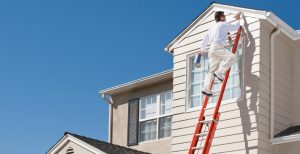
Weather plays a crucial role in the success and longevity of exterior painting projects, especially in regions like San Francisco with its unique climate. Understanding how weather affects exterior painting can help homeowners and contractors achieve optimal results throughout the year.
Factors to Consider in San Francisco's Climate
San Francisco's climate is characterized by mild, wet winters and dry summers. The city experiences fog, wind, and occasional rain throughout the year. These factors can affect paint drying times and adhesion, making it crucial to choose the right painting conditions.
Heat and Sun
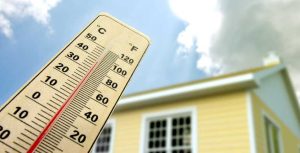
Staying in strong sun and hot weather for a long time can make colors fade and chalk off. The sun's UV rays break down the paint's colors and protective layers, making it lose color and protection. This makes it look dull and worn-out over time.
Important Tips: Select good UV-resistant paints and put on many thin layers for strong protection. Check your paint job often for fading, and fix it when necessary.
Summer is often considered the best season for exterior painting in San Francisco due to its warm and dry weather. However, painters should take precautions against high temperatures, which can accelerate paint drying times and affect application.
Ideal Weather Conditions
During summer, aim to paint on days with moderate temperatures (around 70°F to 80°F), low humidity, and minimal wind. Avoid painting in direct sunlight to prevent rapid drying and uneven application.
Precautions Against High Temperatures
To prevent paint from drying too quickly, work in smaller sections, keep paint cans covered when not in use, and consider using additives to extend drying times. Hydrate regularly and wear appropriate sun protection gear when painting exterior in hot weather.
Rain and Humidity

Too much water can make paint bubble, peel, and crack. Rain can get in, causing wood to rot and mold to grow under the paint. High humidity slows drying, making it hard for paint to stick well.
Important tip: Make sure the surface is dry and without water before painting. Use paint that's good at handling moisture for places that get a lot of rain. Keep gutters and downspouts in good shape to keep water off painted areas.
Cold and Freezing Temperatures
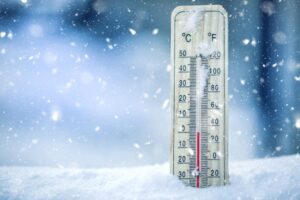
When it is cold outside, the paint on your home can get brittle and crack. Freezing temperatures make the paint expand and contract, which leads to flaking and peeling. Plus, paint does not stick well to cold surfaces.
Important winter tips: Winter painting in San Francisco presents challenges due to colder temperatures and higher humidity. However, with proper strategies, it is possible to achieve successful results even during the colder months.
Paint when it's not too cold, usually above 50°F or 10°C. Add special stuff to paint in cold weather to help it stick better and dry right. Also, make sure the surface is clean and not icy or snowy. It is better to wait for warmer weather before painting outside. This helps the paint stick well and last longer..
Challenges of Cold Weather
Cold weather can slow down paint drying times, affect adhesion, and lead to improper curing. It is essential to choose paints designed for colder temperatures and follow manufacturer recommendations for application.
Strategies for Successful Winter Painting
Painters should schedule work during milder days, preferably when temperatures are above 50°F and humidity levels are lower. Use heaters or dehumidifiers to create optimal painting conditions and allow sufficient drying time between coats.
Wind and Dust
Wind, which is the movement of air, can carry tiny particles such as dust, dirt, and debris. These particles settle on freshly painted surfaces, potentially marring the finish. As a result, the painted surface may develop a rough texture and an uneven appearance. To avoid this, it is advisable to wait for warmer temperatures before doing any exterior paint jobs. This precaution helps ensure that the paint lasts a long time and maintains its desired look and quality.
Important tip: When planning your painting project, choose days with minimal wind speeds. Take precautions to shield the surrounding area, preventing dust and debris from settling on the freshly applied paint. Additionally, consider utilizing an airless paint sprayer for a more polished finish.
Seasonal Painting Tips
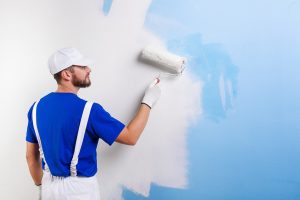
Now that we have talked about how weather affects outside paint, let's share some useful tips for painting and keeping your paint job nice all year round.
Spring: Repairing Winter Damage and Refreshing Your Exterior
Spring is a best time to evaluate the impact of winter weather on your exterior. Examine your outer surfaces for signs of cracks, peeling, or chipped paint. To solve these problems, meticulously scrape and sand the affected regions before applying a rejuvenating layer of paint. Additionally, take advantage of spring’s gentler temperatures for any outdoor painting projects.
Summer: Best Time for Painting Projects
Summer’s warm and dry conditions provide an ideal canvas for your painting projects. If you are contemplating a complete exterior paint project, summer is the opportune season to unleash your creativity. However, keep in mind a few crucial tips:
- Select UV-protected Paint: Opt for paint that offers UV protection. This shields your masterpiece from the sun’s harsh rays, preventing premature fading and discoloration.
- Timing Matters: Avoid painting during scorching hot weather. Extreme heat can lead to rapid drying, affecting the quality of your work. Instead, choose a time when the weather is more moderate for optimal results.
Fall: Getting Your Home Ready for Winter
As autumn approaches, ensure that your home is well-prepared to endure the harsh winter conditions. Thoroughly examine your home’s exterior for any signs of paint damage, and promptly address any chipped or peeling paint to maintain its protective barrier. Additionally, carefully seal any gaps or cracks around windows and doors to prevent moisture infiltration during the upcoming wet months, safeguarding your home’s integrity.
Winter: Quick Fixes for Paint Problems
Winter is not the optimal season for large-scale painting projects, but it’s ideal for minor touch-ups. Carefully observe your surroundings for any spots that demand attention, such as peeling paint or cracks. Swiftly rectify these issues to prevent any further deterioration.
Best Seasons for Exterior Painting

While summer offers more stable and favorable painting conditions in San Francisco, with warm temperatures and lower humidity, other seasons can also be suitable with proper preparation and planning.
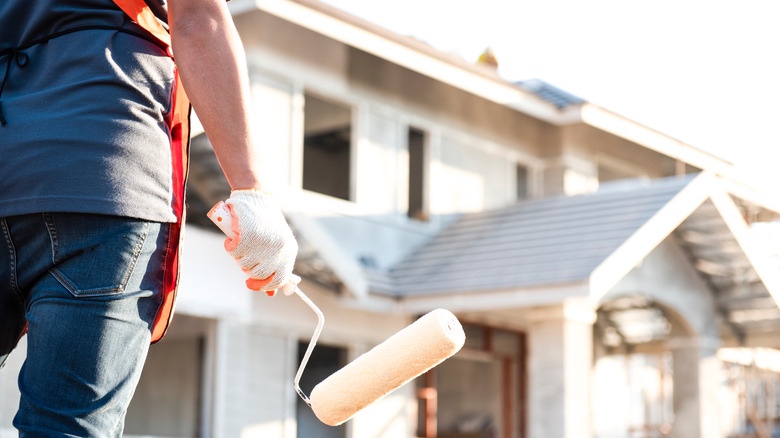

No comments yet